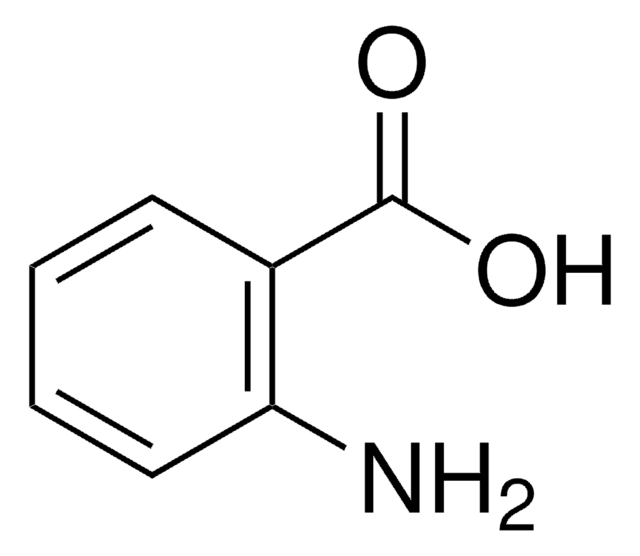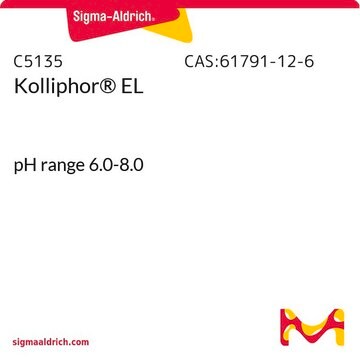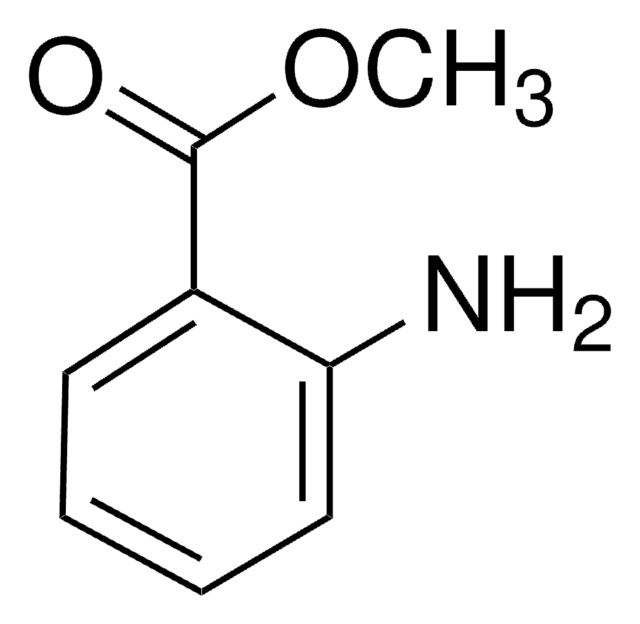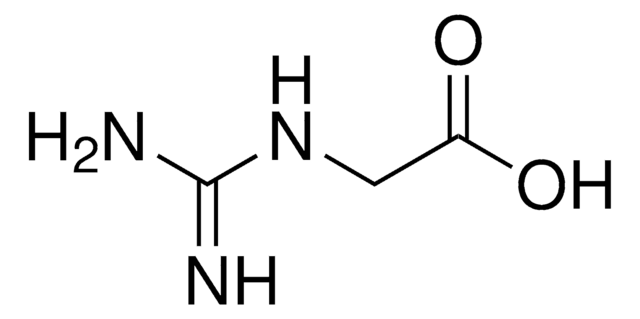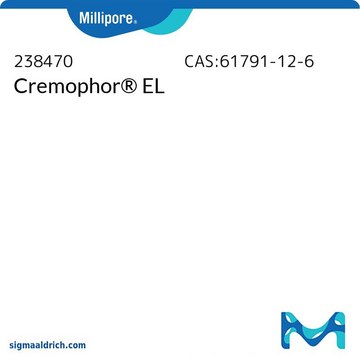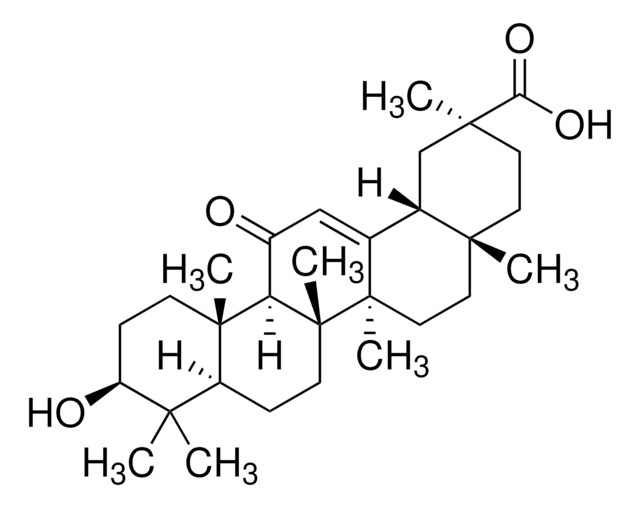A8486
N-(p-Amylcinnamoyl)anthranilic acid
≥98% (HPLC)
Synonym(e):
2-[[1-oxo-3-(4-Pentylphenyl)-2-propen-1-yl]amino]-benzoic acid, ACA, N-(4-Pentylcinnamoyl)anthranilic acid
About This Item
Empfohlene Produkte
Assay
≥98% (HPLC)
Form
powder
Farbe
white to off-white
Löslichkeit
DMSO: ≥20 mg/mL
Lagertemp.
room temp
SMILES String
CCCCCc1ccc(\C=C\C(=O)Nc2ccccc2C(O)=O)cc1
InChI
1S/C21H23NO3/c1-2-3-4-7-16-10-12-17(13-11-16)14-15-20(23)22-19-9-6-5-8-18(19)21(24)25/h5-6,8-15H,2-4,7H2,1H3,(H,22,23)(H,24,25)/b15-14+
InChIKey
GAMRBCZMOOMBSQ-CCEZHUSRSA-N
Allgemeine Beschreibung
Anwendung
Biochem./physiol. Wirkung
Leistungsmerkmale und Vorteile
Signalwort
Warning
H-Sätze
P-Sätze
Gefahreneinstufungen
Aquatic Acute 1 - Aquatic Chronic 1
Lagerklassenschlüssel
11 - Combustible Solids
WGK
WGK 3
Flammpunkt (°F)
Not applicable
Flammpunkt (°C)
Not applicable
Analysenzertifikate (COA)
Suchen Sie nach Analysenzertifikate (COA), indem Sie die Lot-/Chargennummer des Produkts eingeben. Lot- und Chargennummern sind auf dem Produktetikett hinter den Wörtern ‘Lot’ oder ‘Batch’ (Lot oder Charge) zu finden.
Besitzen Sie dieses Produkt bereits?
In der Dokumentenbibliothek finden Sie die Dokumentation zu den Produkten, die Sie kürzlich erworben haben.
Kunden haben sich ebenfalls angesehen
Artikel
Phospholipase A2 (PLA2) designates a class of enzymes that hydrolyze the sn-2 ester of glycerophospholipids to produce a fatty acid and a lysophospholipid. It has become clear that some of these enzymes liberate arachidonic acid in mammalian cells for the biosynthesis of eicosanoids, and thus there has been considerable interest in developing PLA2 inhibitors. Based on amino acid sequences, there are now more than 12 distinct groups of mammalian PLA2s, as well as many non-mammalian forms, all of which have been classified into 14 distinct groups with many subgroups.
We offers many products related to transient receptor potential channels for your research needs.
Unser Team von Wissenschaftlern verfügt über Erfahrung in allen Forschungsbereichen einschließlich Life Science, Materialwissenschaften, chemischer Synthese, Chromatographie, Analytik und vielen mehr..
Setzen Sie sich mit dem technischen Dienst in Verbindung.